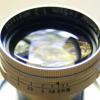contrast differentiation between few lenses
-
Recently Browsing 0 members
- No registered users viewing this page.
-
Similar Content
-
- 0 comments
- 115 views
-
- 10 replies
- 641 views
-
- 1 reply
- 615 views
-
- 2 replies
- 2,056 views
-
- 9 replies
- 6,416 views
-




Recommended Posts
Join the conversation
You can post now and register later. If you have an account, sign in now to post with your account.
Note: Your post will require moderator approval before it will be visible.